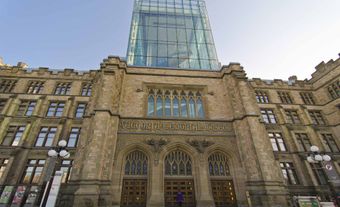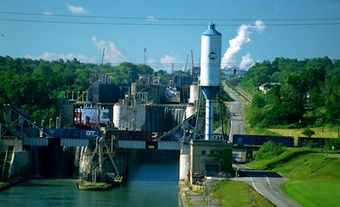Settlement and Development
Port Colborne was founded in 1833 with the construction of the Welland Canal. It expanded to serve each successive waterway. Lock 8, the longest on the canal, is located here. At 421 m it is also the second longest canal lock in the world. The town grew around its harbour. It benefited from its location on the Welland Railway and on the Buffalo and Lake Huron (now Canadian National) Railway.
Port Colborne attracted wealthy American tourists in the late 1880s. The mansions on Tennessee Avenue, built as summer homes, reflect their influence.
Economy
Industries associated with the canal have included the servicing of vessels, flour milling, repair and breakup of vessels, lake fishing and limestone quarrying. The city also has an important nickel refinery. The surrounding industrial areas occupy land reclaimed from the lake bed. Intensive agriculture in the rural vicinity occupies former marshland. Today’s tourism is reflected in summer cottage and residential developments along the shoreline in both directions. The Historical and Marine Museum consists of seven heritage buildings in the city centre.

 Share on Facebook
Share on Facebook Share on X
Share on X Share by Email
Share by Email Share on Google Classroom
Share on Google Classroom



